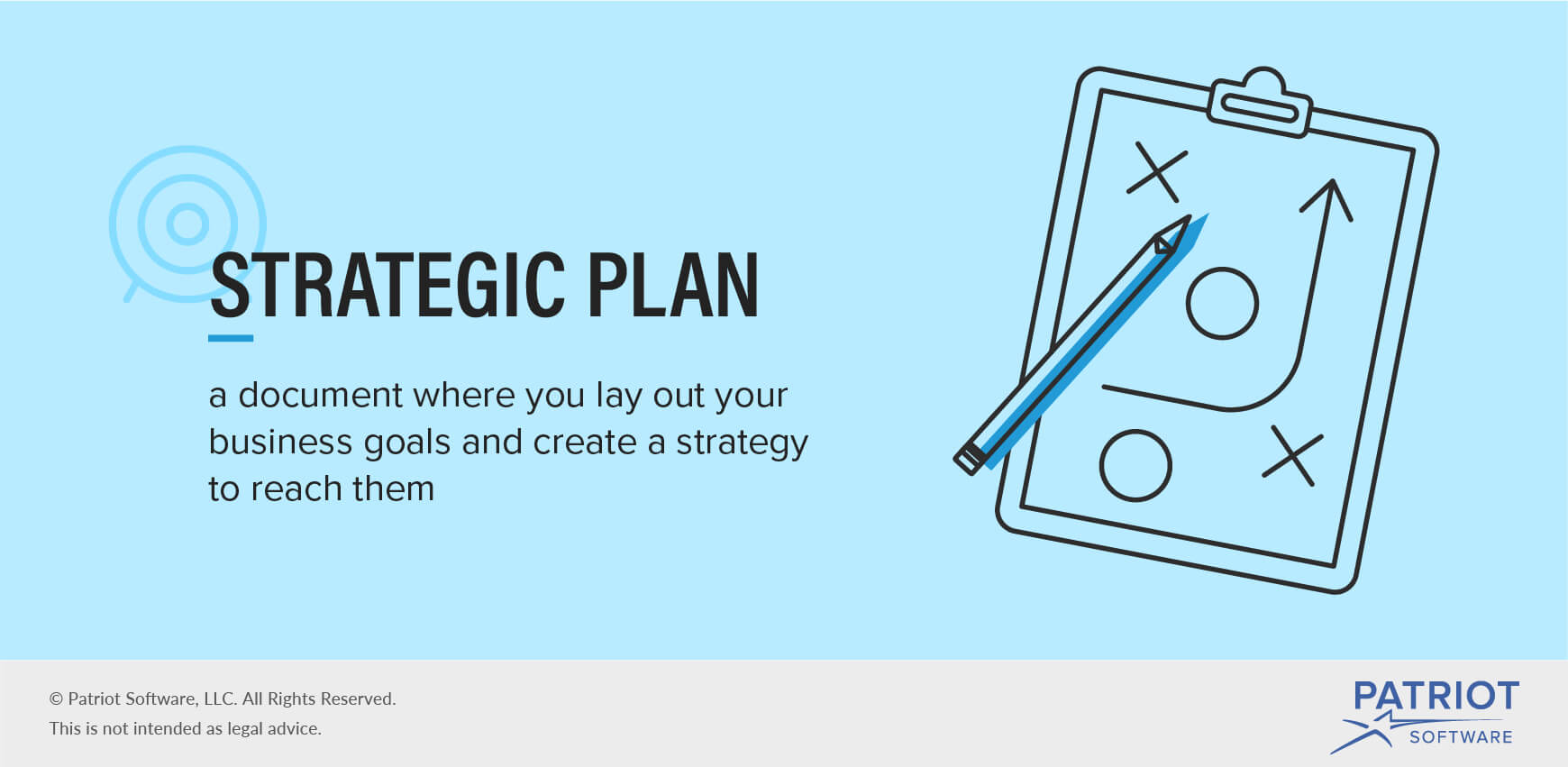When you start a business, you’re thinking about what is going to happen tomorrow or next week. You’re probably not thinking about what you are going to do next quarter or year.
But as your business grows, you need to develop more of a future focus. You need to have goals and a plan to reach them. To do this, you need to know how to write a strategic plan.
What is a strategic plan?
A strategic plan is a document where you lay out your business goals and create a strategy to reach them. The strategic business plan is intended to give you direction.
Your strategic plan is a valuable resource for you to keep your business on track. And, it can be valuable to others, too. You can show the plan to employees and investors so they can get a better idea about the long-term trajectory of your business.

How to write a strategic plan
Before writing a strategic plan, you need to first set goals.
Write a small business mission statement and a vision statement to establish your business goals. These are short statements that summarize your goals. You will use these statements to guide your strategic plan, which is much longer and explains how you will reach the goals.
Strategic plan outline
Below are the sections that you might put in your business’s strategic plan. Depending on your business and how you intend to use your strategic plan document, you might not use all the sections. Or, you might decide to add other sections that are not listed here.
Executive summary
In this section, you will write an outline of your strategic plan. Someone should be able to read this section and quickly understand the content and key takeaways. You should not include the nitty-gritty numbers and details of your plan in the executive summary.
It might help to write this section last. That way, you know exactly what is in your strategic plan and can accurately summarize it.
SWOT analysis
A SWOT analysis looks at your business’s strengths, weaknesses, opportunities, and threats. You will look at your business’s strengths and direction, as well as obstacles that might stand in your way.
Goals
You need to set specific goals for your business. The goals can be about anything related to your business: customers, income, expansion, etc. You might pull your goals from your vision and mission statements. You can also add additional goals.
When you write your goals, try to create SMART goals. These are:
- Specific
- Measurable
- Achievable
- Reasonable
- Timely
By setting SMART goals, you can more easily monitor if you meet the goals.
Financial projections
To achieve your goals, you’re going to need money. In this section, talk about how much money you think you will need, how much money you think will come from your business, and where you plan to get additional money.
You might want to give multiple scenarios in the strategic plan. Consider what you will do if you don’t get as much money as you want or if you get far more than expected.
Target customers
In this section, you will give a breakdown of your ideal customers. You will write about everything you know about them. This might include their age range, geographic location, interests, and growth trends.
You can typically get this information by conducting a marketing analysis.
Industry analysis
You will also need to give details on your business’s industry. Look for industry trends and direct competitors.
You might use your market analysis to create this section. You might also use statistics from other businesses that have researched your industry.
Staff
You might want to include a section about your employees. You can list what your current staff looks like and what type of leadership and teams you have in place.
If you plan to grow your staff, you can write about that in this section. Talk about your staffing goals and which positions you expect to hire for.
Marketing plan
Tell how you plan to present your company to customers. List the tactics you plan to use to find new customers. And, show any projections you have.
You might want to write out your current marketing tactics and any new ones you want to try. List the resources you need to make your marketing tactics work (e.g., manpower, money, partnerships).
These views are made solely by the author.
